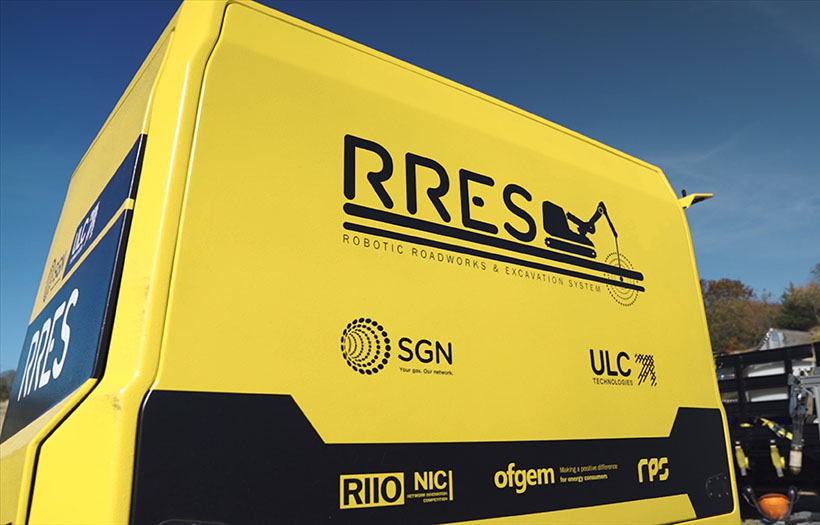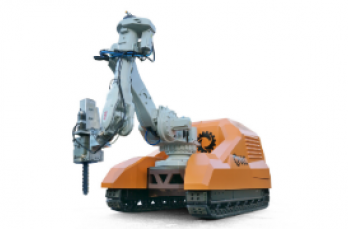
We’re revealing our latest Robotics Roadworks and Excavation System (RRES) prototype at three major virtual energy industry events this winter: Utility Week Live, the Future of Utilities Summit and the Energy Networks Innovation Conference.
Two years into a three-year development programme with our partner ULC Technologies, our world-first all-electric autonomous robot is on track for field trials to begin on our network early next year.
Our RRES project aims to develop an accurate, safe automated system to maintain our network of underground gas pipes. This will help reduce the costs of excavating buried pipelines, minimise the disruption associated with excavating underground pipes and also make excavating close to utility pipes and cables even safer for our engineers.
Typically, accurate robotic systems are found inside protected and controlled environments. The RRES robot takes this technology out into the field, mounting a robotic arm on a track to make the system mobile while providing a robust and weatherproof cover to protect the robotics in all weather conditions.
At Utility Week Live between Tuesday 24 November and Thursday 26 November, the Future of Utilities Summit on Friday 4 December and the Energy Network Innovation Conference on 9 December, we’ll be introducing our latest prototype and showcasing some of the exciting developments we’ve made in recent months:
Below-ground sensors
Before starting any excavation, RRES uses a host of different types of sensors to build a detailed and very accurate picture of the ground beneath it. The robot automatically scans the area and a computer algorithm then processes the data, combining it to create a map. RRES then generates a three-dimensional model of underground assets, enabling the team to plan a site for excavation with complete confidence.
Road cutting device
RRES is now equipped with a road cutting device to cut and remove a keyhole shape from the road surface. Unlike traditional methods, the device can cut any shape into the road. Using AI, the robotic cutting arm can sense material hardness and adjust the cutting speed, which extends the lifetime of the tool by automatically tailoring the use and strength needed.
Soft touch excavation
With the keyhole removed, the soil above the asset is excavated. RRES uses supersonic air nozzles to agitate the soil, which is then removed with a vacuum suction mechanism. The tool head has sensors to detect any asset that is close to the excavation site, allowing for further inspection and avoiding damage. The quantity of sensors allows RRES to create a three-dimensional understanding of what is around the operational area.
Backfill
The robotic arm is integrated with an air compactor for reinstatement of the loose material that was put aside from the excavation. Sensors measure the soil compaction level and soil is returned in layers, compacted to mirror the density of the surrounding subsoil. Finally, the road surface key is replaced and sealed.
Our Head of Innovation John Richardson said: “During the virtual sessions, we’ll be able to provide real insight into how we’ve developed RRES to the stage that we’re almost ready to begin our field trials early next year, as well as answer questions from delegates in real time.”
ULC Technologies' Head of AI and Machine Learning Ali Asmari added: “With recent testing completed in the U.S., ULC is looking forward to sharing the progress we’ve made with RRES at our upcoming events. The virtual events will allow our team to provide demonstrations and share insights and learning from the duration of the project.”
Registration for Utility Week Live, the Future of Utilities Summit and the Energy Networks Innovation Conference is free and open to everyone.


